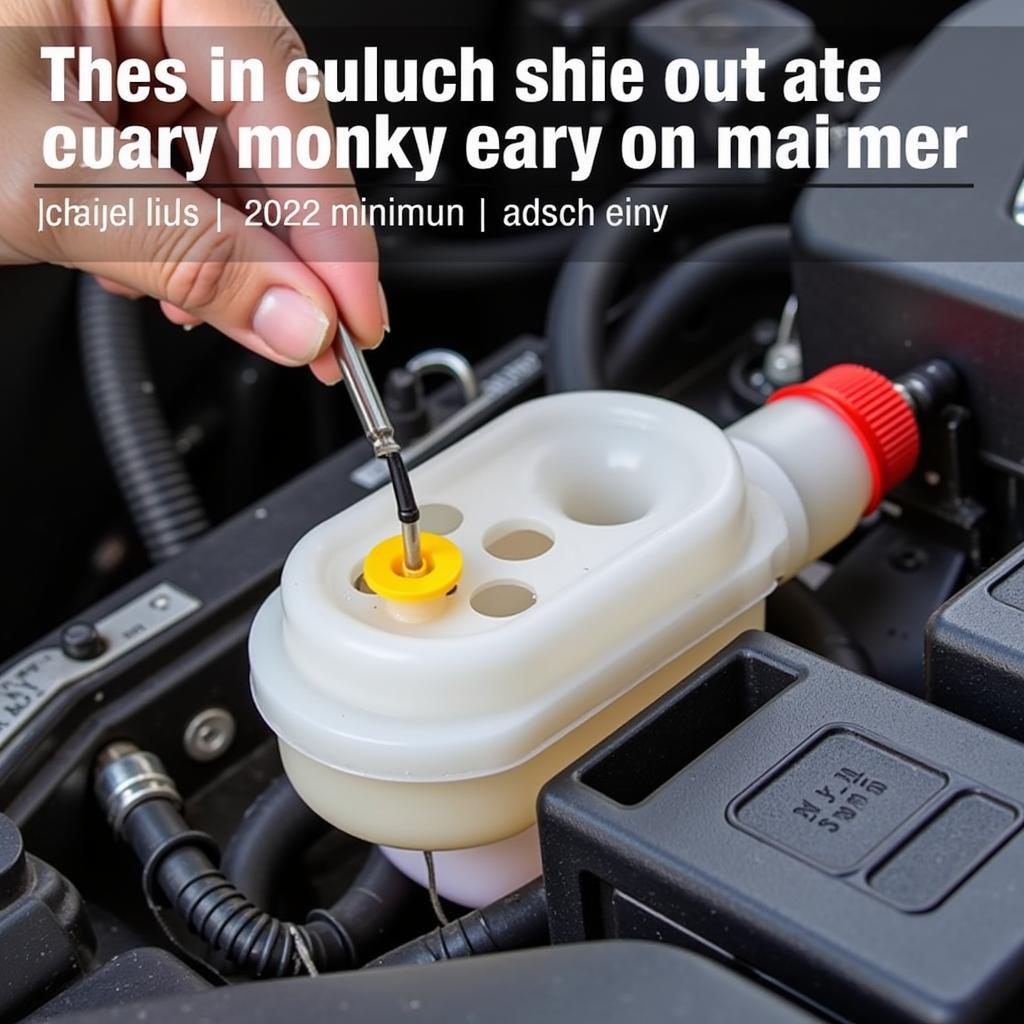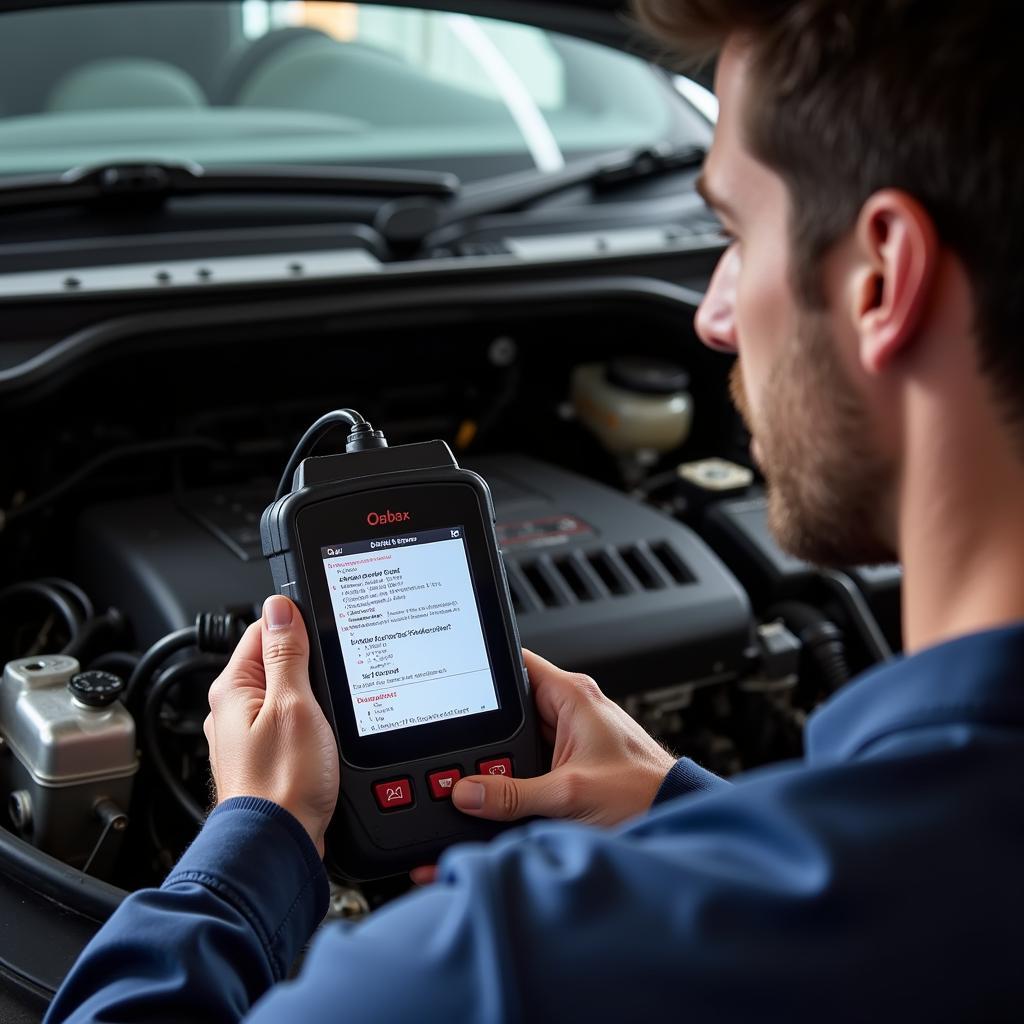A brake warning light illuminating on your dashboard is a serious issue that should never be ignored. It signifies a potential problem within your braking system, requiring immediate attention. Understanding how to test and diagnose the cause of this warning light is crucial for maintaining your vehicle’s safety and performance. This article will guide you through the process of testing your brake warning light and provide insights into potential issues.
If your brake warning light comes on, you need to diagnose the issue. Learn about testing a brake warning light and other potential brake problems here. You can find more information about specific car models like BMW brake pad warning light issues on our website.
Understanding Your Brake Warning Light
The brake warning light serves as your vehicle’s primary communication tool about the health of its braking system. It can indicate various problems, from low brake fluid to more severe issues like a malfunctioning ABS system. Ignoring this light could lead to decreased braking performance and potentially dangerous driving situations.
Common Causes of a Brake Warning Light
Several factors can trigger the brake warning light. These include:
- Low Brake Fluid: This is the most common culprit. Brake fluid is essential for transferring pressure from the brake pedal to the brake calipers, enabling your car to stop. A leak in the system can lead to low fluid levels and trigger the warning light.
- Worn Brake Pads: Brake pads are designed to wear down over time. When they reach a certain thickness, a sensor will trigger the warning light, indicating the need for replacement.
- Faulty Brake Sensor: Sometimes, the brake sensor itself can malfunction, triggering the warning light even when the brake pads and fluid levels are adequate.
- ABS Issues: Problems within the Anti-lock Braking System (ABS), such as a malfunctioning sensor or pump, can also illuminate the brake warning light.
- Parking Brake Engaged: In some vehicles, the brake warning light may also illuminate if the parking brake is engaged.
How to Test Your Brake Warning Light
Testing your brake warning light involves a systematic approach to identify the underlying cause. Here’s a step-by-step guide:
- Check the Parking Brake: Ensure the parking brake is fully disengaged. If the light remains on after releasing the parking brake, proceed to the next step.
- Inspect the Brake Fluid Level: Locate the brake fluid reservoir under the hood. Check the fluid level, ensuring it’s within the minimum and maximum markers. If the fluid is low, add the correct type of brake fluid as specified in your owner’s manual.
- Visually Inspect Brake Pads: If possible, visually check the thickness of your brake pads. If they appear excessively worn, consult a mechanic for replacement.
- Test the Brake Light Switch: This switch is usually located above the brake pedal. You can test it by pressing the brake pedal and observing if the brake lights illuminate. If not, the switch might be faulty.
- Use a Diagnostic Scanner: A diagnostic scanner can be used to read trouble codes stored in your vehicle’s computer. These codes can provide valuable insights into the specific cause of the brake warning light.
 Checking Brake Fluid Reservoir
Checking Brake Fluid Reservoir
Addressing the 2001 Honda Accord brake lamp warning light can sometimes be tricky. Specific guides for different models, such as the Audi A5 brake pads warning light, can be very helpful.
Using a Diagnostic Scanner for In-Depth Testing
A diagnostic scanner is a valuable tool for diagnosing brake warning light issues. It allows you to read diagnostic trouble codes (DTCs) stored in the vehicle’s computer, providing specific information about the problem.
 Using a Diagnostic Scanner for Brake Test
Using a Diagnostic Scanner for Brake Test
For BMW owners, understanding how to remove a brake pad warning light BMW is essential. Similarly, information on brake fluid warning light BMW E90 is readily available.
When to Seek Professional Help
While some brake warning light issues can be addressed with basic checks, more complex problems may require professional assistance. If you’re unsure about the cause of the warning light or uncomfortable performing the diagnostic steps, consult a qualified mechanic immediately.
“Regular brake system maintenance is key to preventing major issues,” says John Smith, ASE Certified Master Technician. “Ignoring a brake warning light can lead to costly repairs and compromise safety.”
 Mechanic Inspecting Brakes
Mechanic Inspecting Brakes
BMW owners can also find helpful resources online, such as articles detailing how to remove the brake pad warning light on a BMW.
Conclusion
Understanding how to test a brake warning light is crucial for maintaining your vehicle’s safety. By following the steps outlined in this article, you can effectively diagnose the underlying issue and take appropriate action. Remember, never ignore a brake warning light, as it could indicate a serious problem. If you are unsure about any aspect of the diagnosis, consult a qualified mechanic for professional assistance.
FAQ
- What does a flashing brake warning light indicate? A flashing brake warning light often signifies a more serious issue with the ABS system.
- Can I drive with the brake warning light on? While you might be able to drive short distances, it’s highly recommended to address the issue immediately. Driving with a faulty braking system is extremely dangerous.
- How often should I check my brake fluid? It’s a good practice to check your brake fluid level at least once a month.
- What type of brake fluid should I use? Refer to your owner’s manual for the correct type of brake fluid recommended for your vehicle.
- How much does it cost to replace brake pads? The cost of brake pad replacement varies depending on the make and model of your vehicle.
- How can I reset the brake warning light after repairs? In most cases, the brake warning light will reset automatically once the issue is resolved. However, some vehicles may require a diagnostic scanner to manually reset the light.
- Can a faulty brake light switch trigger the brake warning light? In some cases, yes. A malfunctioning brake light switch can sometimes cause the brake warning light to illuminate.
